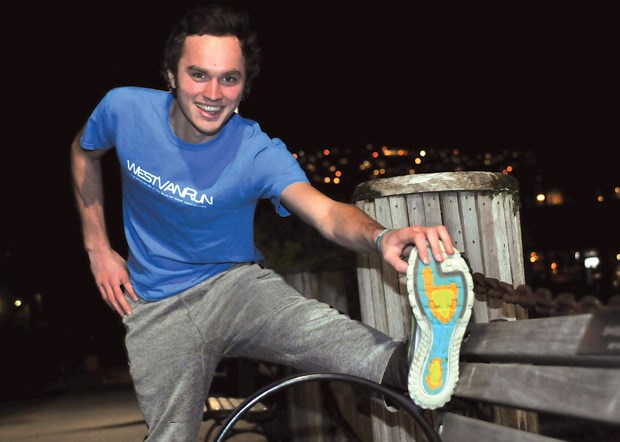As both a physiotherapist and runner, I’m fortunate to have a wide base of knowledge of training.
Academically, I know the importance of following a consistent training program, running with good technique, in good shoes, cross training, eating well, stretching, foam rolling and using good recovery techniques to reduce risk of injury. Experience has taught me so much more.
A couple of years ago, on my first run after the daylight saving time change, I found myself unexpectedly running in the dark through an unlit stretch of sidewalk construction. I was totally unprepared with no headlight. The next thing I knew, my foot rolled over the edge of uneven asphalt and I was lying on the pavement with a severe sprained ankle, alone, no cellphone and wearing dark clothing so not visible to cars. My dog looked at me questioningly as if to say, “Now what?”
Collisions between motorists and runners are a real threat for road runners, especially with most runners training this time of year in the early morning or early evening extreme dark.
To prevent a close encounter with cars and sidewalks, the following are some basic safety rules.
In preparation for your run, think about visibility.
Run facing oncoming traffic and on the sidewalk if possible. This way, you can react to any mistake a driver might make. Allow for ample space when cars are passing you. Be prepared to jump onto a sidewalk or shoulder of the road if necessary.
In the dark, use a powerful white beam headlamp or handheld light to light up your path a few feet ahead of you.
Don’t assume a driver sees you. Dark clothing is very difficult for a motorist to see. They will only notice you when they are dangerously close. Wear light, bright clothing with reflective strips or a reflective vest. In addition to a headlamp, a handheld light or blinking red lights will increase your visibility. Make sure you’re lit up from the front and behind as well as the sides. Put a light on your dog too. These lights are readily available at any running or athletic store. Get more than one and don’t forget to use them.
At stop signs, wait for drivers to wave you through. Especially be aware of drivers coming out of a side road who look left for traffic but often fail to look right to check for pedestrians and runners.
Cross at the crossroads obeying traffic lights.
When running in a group, go single file when cars need to pass.
Use hand signals to show which way you plan to turn.
When cresting a hill remember a driver’s vision can be temporarily impaired by the glare of the sun.
In slippery road conditions stay off the road as much as possible to avoid slipping into traffic. Run with short strides and watch for black ice — especially on hills.
Avoid using iPods or headphones so you can hear traffic. Run with only one earbud so you can hear outside noise.
Run with a cellphone, especially in isolated areas. Also carry ID and emergency contacts.
And don’t forget to warm up. Start running slowly for 10 minutes. Do dynamic stretching, moving joints slowly in small range of movement and moving into bigger full range of movement with increasing speed before starting the run.
Be safe!
***
Training is in full swing for upcoming spring running events, including the Annual West Van Run, the Annual five- and 10-kilometre run/walk of West Vancouver. The event is open to participants of all ages and abilities and supports Special Olympics B.C. — North Shore. westvanrun.com
Jacqui Steinberg, BScPT, CAFCI, is a registered physiotherapist at Aquatic Centre Physiotherapy (acphysio.com) at the West Vancouver Aquatic Centre. She has 25 years experience in and specializes in orthopaedics and sports injuries. She gives regular talks to running groups and as an avid runner, she recently completed the Boston and Vancouver marathons.



